Latvian Riflemen in World War I I World War I

World War I was a turning point in European history, and it was also a turning point in Latvian history. As early as 1915, war was raging across Europe, and in the summer of that year the story of the heroic Latvian riflemen began. Thousands of volunteers in Latvia joined the army and founded their own national units. Thousands of men volunteered to face the enemy shoulder to shoulder with their compatriots.
In the spring of 1915, German troops invaded the territory of Latvia, and after almost half a year of hostilities, the front stabilized in the autumn, dividing Latvia into two parts. The fateful river Daugava became the front line and symbolic border, on the banks of which many people left their homes and loved ones. The heroic ancestors of the Latvian riflemen were two combined labor battalions of the Daugavgrīva fortress, which fought heavy battles against the invading Germans.
By the spring of 1915, the Russian military authorities had received several proposals to establish Latvian national military units. However, they were all rejected. After the successful battles of the Daugavgrīva fortress guard battalions near Jelgava in early May 1915, the idea of the need for Latvian military formations resurfaced. This was advocated by one of the most prominent Latvian politicians of the time – a deputy of the Russian State Duma, Jānis Goldmanis. In order to discuss this idea and the possibilities of its implementation, on June 1, 1915, he invited prominent representatives of the Latvian intelligentsia, military and economic circles to a secret meeting.
The catastrophic state of the Russian army in the summer of 1915 was one of the most important factors in receiving a favorable decision to form Latvian units, promising a Latvian command language, Latvian inscriptions on battle flags, and special breastplates. Hopes also remained for political reforms after the end of the war – the introduction of broader local government in Latvia, administrative reform, and cultural autonomy.
On August 10, 1915, the newspaper "Dzimtenes Vēstnesis" published the appeal "Gather under Latvian flags", written by writers Atas Ķeniņš and Kārlis Skalbe and signed by Russian State Duma deputies Jānis Goldmanis and Jānis Zālītis, which called on volunteers aged 17 to 35 to apply for Latvian battalions and defend their homeland against German invaders.
In the first days, so many men arrived that the organizing committees worked even at night. Among the volunteers were many young men who had not experienced either war or service, but their enthusiasm also carried along older men who knew where they were going. In total, about 8,000 volunteers applied, and throughout the First World War there were up to 25,000 men in the Latvian rifle battalions. By 1916, the Latvian riflemen were united in the Daugavgrīva battalion, the Riga, Kurzeme, Vidzeme, Zemgale, Tukums, Bauska, Valmiera and Reserve battalions, which were renamed regiments in the later years of the war.
Latvian rifle battalions went into their first battles in October 1915 to stop the German attack near Riga. In the summer and autumn of 1916, the riflemen fought on the Island of Death, in January 1917, the Jelgava Operation or the Christmas Battle took place in Tīreļpurva near Ložmetējkalns, where the riflemen lost a third of their comrades, and in the autumn of 1917, they held out against German superiority in the battles near Mazā Jugla.
After the end of World War I, some Latvian riflemen remained in Russia and fought in the Civil War on various fronts, while others participated in the Latvian War of Independence. In 1920, when peacetime came, a large number of former riflemen who had spent the last five years fighting returned to Latvia.
Of the approximately 3,000 Latvian riflemen who fell by 1917, 870 are buried in the Riga Brothers' Cemetery. The rest, for various reasons, could not be transported to Riga, so the burials of Latvian soldiers can be found in Sloka, Ķemeri, Tīnūži, Ķekava and elsewhere.
Alongside the events of World War I, another struggle was actually taking place in Latvia – the struggle for Latvian self-confidence, and at that time, the hope for the creation of their own state was also born from the fighting spirit of the Riflemen.
More information sources
1. Documentary film "Under Latvian Flags. Birth of Heroes", 2015. Available: https://www.youtube.com/watch?v=GmZV74r6EbI [viewed: 04.05.2021.].
2. Blizzard of Souls. Digital Museum. Available: https://www.dveseluputenis.lv/lv/laika-skala/notikums/67/latviesu-inteligence-nolemj-dibinat-strelnieku-vienibas/ [accessed: 05.05.2021.].
3. Zariņš K. “The First World War in Latvia and the Battles of Latvian Riflemen”, 2015. Available: https://www.sargs.lv/lv/pirmais-pasaules-kars/2015-07-15/pirmais-pasaules-kars-latvija-un-latviesu-strelnieku-cinas [accessed: 05.05.2021.].
Your comments
Related timeline
Related objects
Christmas Battle Museum
The museum is located in “Mangali” house, Valgunde Rural Territory, Jelgava Municipality, and it is a branch of the Latvian War Museum. It was unveiled in 2005 at the site of the Christmas Battles that occurred during World War I. Unique World War I fortifications still remain at the battle sites. The open-air exhibition of the Christmas Battle Museum reconstructs a section of the fortification system – the trench shelter and part of the first line of German defence – the “German rampart”, which is the only object of this kind in the Baltic states.
The Christmas Battles are one of the best known and most dramatic events of World War I in Latvia. They are an event of special importance in Latvian military and cultural history. Intense fighting took place for six days, leading to heavy casualties. The battles are mainly associated with the attack of Latvian Riflemen against the German Army units, which took place in particularly severe and unfavourable winter conditions. This is an unprecedented case of a major combat operation launched without artillery support.
Today, the museum artefacts found at the sites of the battle are on display. The indoor exhibition is open at certain times, while the exhibition of outdoor fortifications is open every day. Tourist routes and nature trails have been created in the surrounding area.
River Valley Trench
The starting point of the route is located in the center of Upesleji near the bus stop.
On the morning of September 1, 1917, after a three-hour artillery barrage, the Germans began building three wooden pontoon bridges across the Daugava near Ikšķile. Approximately 560,000 shells were fired from 1,159 guns and mortars, which completely suppressed 66 Russian guns and forced the 186th Division, stationed on the right bank of the Daugava, to retreat. The commander of the Russian 12th Army, General Parskis, ordered the 43rd Corps to counterattack at the breach and placed at the disposal of the corps commander the 33rd, 136th, 138th divisions, one brigade of the 116th Division, and the 2nd Latvian Rifle Brigade.
On the afternoon of September 1, the Latvian riflemen received an order to advance to fight against the Germans crossing the Daugava. The 2nd Latvian Riflemen Brigade from Ropaži went to meet the attacking German units and the soldiers of the 5th Zemgale Latvian Riflemen Regiment reached the fortified positions along the right bank of the Mazā Jugla River at around four o'clock in the afternoon. After artillery fire, the attack on the Latvian riflemen's positions began in the middle of the day on September 2. Defensive battles unfolded on a 14 km long front along the right bank of the Mazā Jugla. The soldiers of the 2nd Latvian Riflemen Brigade with a few guns faced a numerically and technically stronger group of German troops, who also used aviation, flamethrowers and poison-filled cannon shells in the attack. The riflemen managed to heroically hold the front for 26 hours until September 3. Having accomplished their task, the surviving Latvian soldiers retreated to the Sigulda and Cēsis positions on the orders of the 12th Army command. The losses were very heavy – more than half of the fighters in the 5th Zemgale and 6th Tukums Latvian Rifle Regiments were routed, while the 7th Bauska and 8th Valmiera Latvian Rifle Regiments suffered less.
Cultural Heritage Centre "Tīnūži Manor"
The Cultural Heritage Centre ‘Tīnūži Manor’ is located in Ogre municipality, Tīnūži village, 7 km from the cities of Ogre and Ikšķile. The first written evidence about the manor dates back to the 16th century. Until the mid-18th century it was considered an economic production unit with small and insignificant buildings. But over time it grew into a large farm. During World War I, battles between the Russian and German armies took place here, and the Latvian Riflemen were also involved. During the War of Independence Tīnūži manor was used as the headquarters and armoured car park of the 1st Valmiera Infantry Regiment of the Latvian Army. In 1932, the manor was given to the Union of the Latvian War Invalids, which provided accommodation and care for war veterans. During World War II (in 1943) the German Army unit FAT 212 was transferred from Estonia to Tīnūži manor. It was a saboteur unit that prepared soldiers to fight the Red Army. Latvian soldiers were also trained in the arts of intelligence gathering, guerrilla warfare tactics and sabotage. The lord house of Tīnūži manor was destroyed when the Red Army was moving towards Riga. Nowadays it is a place with a beautiful landscape and historical buildings on the banks of the Little Jugla River. Exhibits dedicated to historical events, including the ones concerning the Latvian Riflemen, can be seen at the Cultural Heritage Centre ‘Tīnūži manor’.
Monument to the Battle of the Mazā Jugla at Tīnūži
Located in the village of Tīnūži in Ikšķile municipality, on the side of the highway near the Tīnūži elementary school.
A memorial to the Latvian riflemen who fought against the German army during World War I. The Battle of the Mazā Jugla River on September 1-2, 1917 was the culmination of the Riga Operation. The German army launched an attack against Ikšķile with the aim of taking Riga and capturing the Russian 12th Army. German army units, crossing the Daugava on pontoon bridges, reached the area around the Mazā Jugla River, where they were blocked by Latvian riflemen. They were ordered to delay the enemy until the entire Russian 12th Army escaped the encirclement without being captured by the German army. The fighting took place with heavy losses for both warring sides.
Today, you can visit the monument "Altar of Heroes" by sculptor Jānis Karlovs, dedicated to Latvian fighters, unveiled in 2005. 300 meters away is the Tīnūži Manor, where an exhibition is located.
Ložmetējkalns (Machine Gun Hill) in Tīreļpurvs Bog
Ložmetējkalns is located in Valgunde Rural Territory, Jelgava Municipality, close to the A9 motorway. It is the site of a World War I battle and the only cultural heritage conservation site of national importance in Latvia. Ložmetējkalns is located on Garā Kāpa Dune, which is a part of the Nordeķi-Kalnciems dune ridge. The name originated at a time when it was the site of impregnable fortifications of the German Army, which was defended by heavy machine-gun fire.
The Christmas Battles are one of the best-known and most dramatic events of World War I in the history of Latvia. In 1917, the units of Latvian Riflemen and Siberian riflemen of the Russian Army attacked and took Ložmetējkalns, capturing at least 600 enemy troops and valuable trophies. The riflemen believed that they were the ones who deserved the honour of captors of the highlands.
The area around Ložmetējkalns Hill is home to commemorative marks and other evidence of the battles that took place here. Every year, in January, memorial events are held in the surroundings of Ložmetējkalns to remember the Christmas Battles. Nowadays, Ložmetējkalns has become a symbol and a memorial site dedicated to the heroism of Latvian Riflemen. A 27-metre-high observation tower offers panoramic views of the site of Christmas Battles.
Christmas battles memorial at Antinu Brethren Cemetery
Located in Babīte district, on the side of the road near the former Antiņi house and the old medicine warehouse.
The Antiņi or Tīreļi Soldiers' Cemetery was established during World War I. The area was home to defensive positions of the Russian Empire Army. In 1917, during the Christmas Battles, the headquarters of the 5th Zemgale Latvian Rifle Regiment, a hospital with a medicine warehouse, were located nearby.
In 1917, on the night of January 5-6, under the illumination of eight huge bonfires, 105 fighters of the 5th Semigallian Latvian Rifle Regiment were buried with military honors. They fell in battles against the German army or died of wounds. The burial ceremony was led by the regiment's commander, Jukums Vācietis. In later years, soldiers from other units of the Russian army were also buried in the cemetery. In 1925, a monument by architect Eižens Laube was unveiled in the cemetery, and the territory was landscaped. Information about 3,800 soldiers buried in the cemetery is found in many places, but it should be considered unlikely and unverified.
The second monument to the soldiers of the first independent Latvia in Marupe
is located in Mārupe municipality, in front of the golf club “Viesturi” building on the forest road, opposite the sign to the golf practice field.
The authors of the project idea are Mārupe region guide Miķelis Jakunovs and the owner of the land plot “Dumpmaļi” Visvaldis Dumpis.
In November 2014, during the Latvian Patriots' Week, honoring Latvian soldiers, a second monument to Latvian soldiers was unveiled in the forest near Dzilnupīte, on the border of Mārupe and Babīte counties, another of the First World War battlefields. The conceptual author and financier of the monument is Visvaldis Dumpis, and it was created by sculptor Ivars Feldbergs. The owner of the memorial site, Visvaldis Dumpis, would like people to gather here not only on June 14 and March 25, but also on July 10, on the anniversary of the founding of the national defense forces and on other historical events important to Latvians.
On November 9, 2018, an informative stand about the history of the place and sightseeing objects was opened near the monument. It is dedicated to the history of the place, telling about the once former house "Adieņi" and the Ķurbja family that lived there, the events of the First World War in the area, as well as historical objects that can no longer be seen in nature - the Dūči Bridge, the Dzirnavu pond and mill, and the Hunting Bath.
Latvian soldiers’ former medical warehouse
Located in Babīte district, near the Antiņi soldiers' cemetery and the renovated trenches.
During World War I, the defensive positions of the Russian Empire's army were located in this area from 1915. In 1917, during the Christmas battles, the headquarters of the 5th Zemgale Latvian Rifle Regiment and a hospital with a medicine warehouse were located near the Antiņi house, which was headed by the prominent Latvian military doctor Pēteris Snīķeris.
During the Christmas battles, Latvian riflemen attacked German army units in particularly harsh and unfavorable conditions. The injuries sustained in the battles were of various kinds - gunshot wounds, contusions and traumas, as well as frostbite. Timely medical assistance had to be provided to thousands of Latvian soldiers. It was organized so that the wounded could receive care as quickly as possible. Unarmed paramedics operated on the battlefield, providing first aid and taking the wounded out of dangerous places. Dressing points were set up near the battlefields, where care was continued and triage was carried out. More seriously wounded soldiers were evacuated to infirmaries or hospitals by carts and cars. Cemeteries were established near the infirmaries, where those who died from injuries were buried.
Today, you can visit the old medicine warehouse. Nearby is the Antiņi soldiers' cemetery, as well as reconstructed World War I trenches and dugouts. The environment is suitable for walks in the forest, revealing vivid evidence of military heritage.
WWI Historical Exploration Route and dugout
Located in Olaine, near the Olaine History and Art Museum.
The historical route was created in 2018 at the site of the Russian army fortifications during World War I, which were part of the area's defense system. The battles between the German and Russian armies in the Olaine area attract attention for several reasons. The swampy terrain prevented the warring parties from achieving quick success and required soldiers to have diverse skills when operating in adverse conditions. Accurate terrain analysis, reconnaissance, and fortifications or engineering structures played a major role in warfare.
Today, the educational route is freely accessible and provides a rough idea of the living conditions of the soldiers. The restored buildings are closed, but can be viewed by contacting the specialists of the Olaine History and Art Museum in advance.
Death Island
The group of islands is located in Daugava on the southern side of the Riga HPP reservoir near Daugmale. The Death Island is one of the scariest and most legendary battlefields of World War I. When the Russian Army withdrew from Kurzeme and Zemgale in 1915 some units remained on the left bank of Daugava, where they took positions to fight the German Army. The banks of the river were connected by a bridge. One of the largest chemical weapons usage cases in the territory of Latvia took place here. Latvian soldiers called the place ‘Death Island’, but soldiers of other nationalities called it ‘Hell’. The position of Death Island was of strategic and symbolic importance. For Latvian soldiers it was part of Kurzeme occupied by Germany. Fights took place on the banks of Daugava near Ikšķile, and in some way they were associated with the fights of the ancestors during the Crusades. Nowadays this location is accessible by boat. Territory of the Riga HPP reservoir that was not flooded can be seen. The monument designed by E. Laube still remains. Defensive position elements have been reconstructed in some places. There is an information stand on the bank of Daugava near the Ikšķile Kābeļu hill. Death Island became a group of islands after the construction of the Riga HPP reservoir was finished.
Ogre History and Art Museum
Ogre History and Art Museum was established in 1981. The museum collection comprises more than 40 thousand different units obtained in the territory of Ogre city and the former Ogre district. It extensively depicts the cultural and historical heritage starting from ancient times till modern days.
In the exhibition “From Bank to Museum” the visitors can get acquainted with the history of the building at 36 Brīvības street, and its transformation over the period of 50 years. Initially built as a bank of the USSR, it has lately become the home of Ogre History and Art Museum.
The exposition “Holiday-Makers in Ogre” is dedicated to one of the brightest and most legendary pages in the history of the town. It shows the recreation possibilities, the entertainments of the holiday-makers’, as well as the legends entwining the cultural and social life of Ogre from the beginning of the 20 th century till World War II. The life story of Ogre as a resort town is presented by carefully selected documents and objects, as well as their attractive artistic presentation.
Exhibitions at the museum change monthly. The thematic exhibitions are usually dedicated to different historical events but the artists, such as painters, ceramists, graphic designers, photographers and representatives of other creative professions from Ogre Municipality and the whole country, are represented in the art exhibitions.
Exposition of military bikes in the Bicycle museum in Saulkrasti
The Bicycle Museum is located in Saulkrasti not far from the A1 highway and the railway station Pabaži, near the White Dune. Museum’s collection is made up of technically the most interesting examples of bicycle development history in Latvia. It is the largest bicycle collection in the Baltics with about 60 bicycles made and used in Latvia, including army-type bicycles. In the beginning of the 20th century many armies started to widely utilise the availability and benefits of bicycles. Special bicycle units were formed because of their mobility. Bicycle units were able to gather intelligence and launch unexpected attacks more easily, and were more mobile than regular infantry when it came to operations over a wide area. After World War I the Latvian Army also had bicycle units who used Latvian-made army bicycles. Any soldier who was in such a bicycle unit had to meet strict requirements. Good stamina, eyesight and hearing, as well as a healthy heart and lungs were a must. They could not weigh less than 80 kg and their height had to be 165-180 cm. The standard in the Latvian Army was that a well-trained cyclist should be able to cover 80-100 km in day, and up to 150 km in forced conditions. In winter, when bicycles could not be used, skis were used. A soldier from a bicycle unit had to be able to ski 50-60 km per day. Many soldiers from bicycle units would later become professional athletes.
We have about 5000 visitors every year.
Saulkrasti dougouts
Located in Saulkrasti, in the coastal dunes near the restaurant "Lagoon".
The Russian army fortifications were built during World War I to provide coastal defense against German army landing operations. They are part of a defensive district fortification system located near strategically important objects.
During World War I, the Russian army had created several lines of defense systems in the territory of Latvia. In cases where one of the lines was broken, the new positions and reinforcements there would prevent the German army from advancing further. One of the lines was located in a strip that began in Saulkrasti, continued in Līgatne, Nītaure and ended in Koknese, joining the first defense line that stretched along the banks of the Daugava. The goal was to fortify the area around Saulkrasti, as there were many important objects there. Several river crossings, a branched road network that led to the center of Vidzeme, as well as defense positions that adjoined the sea coast.
Today, the site is home to trenches in a beautiful seaside forest overlooking the sea. It is one of the attractions in the extensive Saulkrasti tourism offer.
General Karls Goppers Memorial Room in his birthplace "Maskati"
Located in Plāņi parish on the banks of the Vija River.
The memorial room of General Kārlis Goppers in his birthplace "Maskati" can be visited.
The “Maskatu” farm was run by the general’s brother Augusts Goppers, because the talented war leader was busy with major events and world wars. In 1920, the general returned to Latvia, to his native home. But many responsible duties connected him to Riga. Augusts continued to manage “Maskatu”. In 1940, General Goppers was arrested and shot in the Cheka cellars on March 25, 1941. In 1944, the Gopper family fled to Courland with three horse-drawn carriages. The war divided the family, and Aleksandrs Goppers’ daughters – Biruta, Elza and Anna – remained in Latvia. They were no longer allowed to return to “Maskatu”. The houses were large and carefully maintained. Three or four families of newcomers were accommodated there in separate rooms. A horse farm was set up in the large barn. Due to mutual quarrels, a fire broke out in 1980. The barn and the large shed burned down. Fortunately, the fire did not spread to the house, the flames were repelled by large trees planted by our ancestors.
In 1991, after the miraculous Awakening, the Latvian state was reborn for the second time. In 1992, the family of General Goppers' brother August regained “Maskatus” as a sacred place of their ancestors. For ten years, everyone worked hard to save the houses from destruction, to restore and rebuild the destroyed buildings, to make the entire “Maskatus” farm beautiful. The houses have been restored to their ancient appearance, and a memorial room for General Kārlis Goppers has also been set up. The memorial room can be visited by calling in advance and making an appointment at +371 29396870, +371 29254285.
Excursion to the monument to the soldiers who fell in World War I in the Spāre Manor Park
Located in the territory of the Spāre Manor complex.
During World War I, the Spāre Manor housed a field hospital for the Russian army. The 24 soldiers who died there, including Latvian riflemen, are buried in the nearby fraternal cemetery. The monument was unveiled on October 6, 1935.
When establishing the memorial site (starting from the road), rows of linden trees were planted on both sides of the road. In 1935, all the improvement work in the area was carried out by Spāre students under the leadership of the school principal Kārlis and Alvīne Skalbergs.
Students from the Spāre Primary School in Amata Municipality are also currently involved in cleaning up the memorial site. The Cēsis 27th KB National Guards provide great support in these works.
A torchlight procession to the memorial site for those who fell in World War I has become a tradition, which is organized on November 11. This event is always led by the Cēsis 27th KB National Guards, and they are always accompanied by a chaplain. An indispensable part of the event is the celebratory volley.
An excursion to the monument to the soldiers who fell in World War I (45 min.) is offered in the territory of the Spāre Manor complex, by booking a visit in advance by calling +371 26558464.
Memorial stone for Latvian riflemen in Plakanciems
In Plakanciems, the Latvian riflemen won their first victory in the historic night battle of October 29, 1915 – just a week after the 1st Daugavgrīva Latvian Riflemen Battalion had left Riga and started operating at the front. With the successful Battle of Plakanciems, the heroic path of our riflemen began. The night attack on the Misa River also had an invaluable moral significance – no one doubted the fighting abilities of the Latvian riflemen, they quickly became popular and many Latvians from Russian regiments joined our national units.
The memorial stone was created by the Ķekava municipality by the Ķekava municipality stone processing and restoration company "Akm Stone Processing Center" - stone craftsmen Guntis Pandars and Pēteris Zvaunis.
The success in the Battle of Plakanciems was ensured by careful continuous reconnaissance lasting four days, a surprise attack plan drawn up by the commander of the 1st Company, Fridrihs Briezis, and the heroism of our soldiers.
The situation on the front was very tense at that time, as German soldiers slowly continued to approach Riga in several places. Near Plakanciems, they had recently crossed the Misa River and begun to establish a bridgehead position, deploying the 2nd Battalion of the German 376th Infantry Regiment and 4 machine guns.
The Latvian riflemen's attack was based on surprise, quick action and coordination of various actions. Each rifleman of the 1st company was given four hand grenades, 60 soldiers put on white cloaks, because a thin snow had just fallen. When the attackers crept close enough to the German positions, at 22:00 the signal was given and the attack began. Both of our machine guns fired at both flanks of the enemy so that the Germans could not attract reserves. Throwing hand grenades, the Latvian riflemen quickly stormed the German trenches, Russian artillerymen fired at the bridges of the Misa River and the enemy's main defense line. The enemy soldiers were confused - suffering heavy losses, they retreated across the river and left the bridgehead in the hands of the attackers. One of our companies had defeated an enemy unit four times larger!
The Latvian riflemen lost six fallen soldiers – Juris Butenieks, Frici Ērmanis, Rūdolfs Hofmanis, Kristaps Krūmiņš, Jānis Nauris and Kirijans Šnurovas. They were all buried in the Riga Brothers' Cemetery. Of the eight wounded, two later died – Jāzeps Brūveris (buried in the Pleskodāle Cemetery) and Jānis Skuja (buried in the Riga Brothers' Cemetery). German losses – 31 soldiers killed, 34 taken prisoner and 45 wounded. The attackers took a machine gun and 35 rifles as trophies.
Monument to the soldiers who fell in World War I and the Latvian War of Independence
Located on Church Street opposite St. Anne's Church.
A monument to the soldiers who fell in World War I and the Latvian War of Independence can be seen.
On May 1, 1923, a “Heroes’ Grove” was planted opposite the Mazsalaca Lutheran Church, in which an oak tree was dedicated to each fallen soldier. According to Likert, a total of 97 oak trees were planted – 23 to those who fell in the War of Independence and 74 to those who fell in World War I. However, the press of the time mentioned that 106 oak trees were planted.
On August 21, 1927, a concrete monument designed by architect Pauls Kundziņš was unveiled in the “Heroes' Grove”, with sculptor Vilhelms Treijs also participating in its construction.
The monument is located next to the Church of St. Anne in Mazsalaca, which was built in a specially selected location so that its slender (58.6 m), beautiful tower could be seen from afar. The church is well preserved, as it was neither destroyed nor adapted for any other purposes during the Soviet era.
Latvian Riflemen Brothers' Cemetery
Located near the Nītaure Orthodox Church, next to the memorial ensemble of Soviet soldiers of World War II.
On September 2, 1934, the Brothers' Grave of the Riflemen and Unknown Soldiers who fell in a clash with the Germans near Nītaure in September 1917 was consecrated.
Chronological order in the creation of graves:
In September 1917, the front line had been strengthened in the section Saulkrasti-Līgatne-Nītaure-Lake Lobes (near Krape)-Koknese. On the road Mālpils-Peļņi-Nītaure, the 6th Tukums and 5th Zemgale regiments had their last clash with the enemy – German troops. Colonel Jukums Vācietis said about it:
“After this battle, silence fell on the front.”
The fallen were buried near the Orthodox church in Nītaure and at various conflict sites on the Mālpils-Peļņi-Nītaure route.
In the 1922 newspaper “Latvijas Kareivis” No. 113.21.05, the article “Historical Battle Memorial Sites” mentions that “the Latvian Riflemen Brothers’ Cemetery is still located in Nītaure, where clashes with the Germans also took place.”
On July 17, 1929, a commission went to Nītauri to inspect the burials, which found that approximately 100 soldiers of the Russian army were buried in Nītauri near the Orthodox church (it is worth noting that the Latvian rifle regiments were founded within the Russian army), but 6 Latvian riflemen were buried near the Lutheran grave: Otto Bērziņš (5th Semigallian Regiment), Kārkliņš (6th Tukums Rifle Regiment), Alfrēds Bedrītis (who fell near Cēsis in the Liberation Wars in 1919), Sviļums (rifleman), Žanis Krūtainis (5th Semigallian Regiment) and an unknown Latvian soldier.
In 1933, the riflemen buried near the Peļņu house were reburied in the Mālpils cemetery, but the remains of soldiers who fell in separate places in More parish were transferred to the Nītaure Brothers' Cemetery near the Nītaure Orthodox Church. 6 fallen soldiers who had been laid to rest in the Lutheran cemetery were also reburied here.
The Cēsis Museum holds a photograph by an unknown author, showing the Brothers' Cemetery in Nītaure before World War II.
After World War II, Soviet soldiers who fell in the battles of Nītaure and More were buried in these cemeteries, and all evidence that the Latvian Riflemen's Brothers' Cemetery was located here was eliminated. In 1984, the currently visible memorial ensemble of Soviet soldiers or Red Army soldiers was created.
Thus, the memorial site of Latvian fighters was wiped off the face of the earth.
In 2017, thanks to the initiative and work of Nītaure local history enthusiast and environmental guide Dace Eipure, a new memorial site was created in the territory of the old Brothers' Cemetery.
You can learn about the memorial site and the history of World War I in Nītaure in the program "Latvian Historical Adventures in Nītaure" by environmental guide Dace Eipure, by calling in advance and booking a visit at +371 29156765!
Cēsis Brothers' Cemetery
Located in the Cēsis Lower Cemetery, Lenču Street 15, Cēsis.
One of the most significant memorial sites of the First World War and the War of Independence in Cēsis is the Brothers' Cemetery in Lejas Kapis.
The cemetery houses the Brothers' Cemetery Monument, designed by Cēsis artist and councilor Augusts Julla (1872-1958), unveiled in 1927, and dedicated to the soldiers buried in the Brothers' Cemetery from 1915 to 1920.
About 200 soldiers are buried in the Brothers' Graves of the Cēsis Leja Cemetery. Among them are an unknown number of Latvian riflemen and Russian soldiers who fell in World War I, as well as soldiers of German (10), Polish and other nationalities. During the Latvian Liberation Struggles, 22 soldiers of the 5th (2nd) Cēsis Infantry Regiment were buried in this cemetery, as well as 11 freedom fighters who fell in other Latvian army units. 2 Estonians, 15 victims of the Bolsheviks, and Latvian Red Riflemen also rest in the Brothers' Graves.
Cēsis history and art museum in the New Castle of Cēsis
The Cēsis History and Art Museum is located in the very centre of the Old Town of Cēsis, in the New Castle. The museum holds a permanent exhibit of history and interiors named ‘Cēsis, a Symbol of Latvian History’, with two thematic sections: the exhibit ‘Red-White-Red Flag in the History of Cēsis and Latvia’ explains the history of the Latvian national flag from the 13th to 20th centuries, the approved national symbol, the flags of Latvian rifle battalions and the traditions of using national colours during the Latvian War of Independence. The exhibit ‘Cēsis and the Latvian War of Independence’ focuses on the founding of the Cēsis Company in December 1918, the joint battle efforts of Estonians and Latvians in the 1919 Battles of Cēsis, the time when, during the Bermondt Affair, Cēsis served as the temporary capital of Latvia for a short time, as well as the history of the Cēsis Victory Monument. In an escape room named ‘Legends of the Battles of Cēsis’, the participants have one hour to find their way out by solving puzzles, making connections and finding hidden objects. The Cēsis Company, one of the first units of the Latvian Armed Forces, was established on 8 December 1918 in Cēsis Castle by Senior Lieutenant Artūrs Jansons. The museum’s exhibit features a memorial plaque dedicated to the Cēsis Company, unveiled on 8 December 1933 at the Cēsis New Castle, which, at the time, served as the headquarters of the 8th Daugavpils Infantry Regiment and the garrison officers’ club.
Kauči or Old Pattern Pine
The pine tree is located on the left side of the Strenči-Valka highway, approximately a kilometer beyond the Strenči border, 140 meters from the highway, in a forest, 400 meters NW of Kauči.
A piece of the tree's rough bark was torn out and the lyrics of the song were carved into the trunk with a knife in old Latvian print, which are now partially legible – ˝ …c mīliotā / …ten līzi cīn… / … nāvīgo as… / …ņa mēs a… / …dz tūsiti / … trādniek…˝ ("Come, beloved girl, to the fight, take the deadly blade in your hand. We, the workers, have suffered much.").
Researchers have suggested that this poem could have been engraved on the trunk of a pine tree between 1905 and 1918, when Latvia was going through revolution and World War I, according to experts from the Latvian State Forests.
Memorial site of J. Lapiņš, the author of the first Latvian flag
Located in “Lejas Pintuļi”, Veselava parish, Priekuļi municipality.
A memorial to Jānis Lapiņš, the author of the Latvian flag, is visible.
The creation of the Latvian national flag took place during World War I. In 1915, when creating the flags of the Latvian rifle battalions, individual artists proposed red, white and red colors for the flag designs. After the design of the educator and journalist Jānis Lapiņš, the red, white and red flag was made in the second half of 1916 by his student, Marianna Straumane, a teacher at the Valmiera refugee shelter.
This is the first known and actually made Latvian national flag, which has survived to this day.
In 2014, a memorial site for the pre-flag author Jānis Lapiņš was opened in “Lejas Pintuļi” of Veselava parish, Priekuļi region.
The first known authentic Latvian national flag, which was smuggled into Russia and carefully hidden during the Soviet and German occupations, is currently kept in the Cēsis History and Art Museum . It was donated in 1997 by their daughter Lija Poga.
Latvian War Museum
The Latvian War Museum is located in the Old Town not far from the Freedom Monument in a historic defence building called the ‘Powder Tower’. There are 11 exhibits in the museum. There are various weapons, documents, uniforms, awards, badges and other items detailing the everyday life of a soldier in war. The Latvian War Museum is one of the oldest museums in Latvia. Its origins can be found in World War I. Museum’s collection was made up mainly of personal items of soldiers or items found on battlefields. After Latvia gained its independence the main goal of the museum became to create an exposition on the military history of Latvia and the active role of the population in protecting their land. In 1937 the museum was expanded and was technically one of the most modern museums in Europe at that time. The Powder Tower was one of the fortification towers of Riga. Some evidence dates back to 1330 where it has been mentioned as the ‘Sand Tower’. The tower was destroyed in 1621 when Riga was besieged by the Swedish Army. But in 1650 a new tower for storing gunpowder and weapons was built. After the city’s fortifications were taken down, the Powder Tower remains as one of the most important pieces of evidence of the Riga defence system.
Latvian riflemen positions and trenches in Tīreļi
Latvian Riflemen dugouts and trenches in Tīreļi are located in Babīte parish, Mārupe municipality, in the vicinity of the Antiņi Latvian Riflemen Cemetery and the former medicine warehouse. During World War I this was the defensive position of Latvian Riflemen of the Russian Imperial Army. A complex of trenches and surface dugouts was built in the sandy hills. Trench or positional warfare is the best way to accurately describe World War I and emphasise the importance of fortifications. They were based on the research of military engineers and adapted to the environment and the development of new weapons. The everyday life of a soldier is a continuous improvement of defensive fortifications. Sometimes soldiers would give the dugouts names that reminded them of their homes and would help to forget about the reality of the war. Trench lines were complex defensive systems that were hard for the enemy to take. With the development of weapons these defences became even more sophisticated. The roofs of dugouts were reinforced to withstand artillery shells. Trenches were made in changing patterns and directions so that explosions would cause as little damage as possible. Movement passages had pockets that were used as short-term hiding spots during artillery fire, because they protected soldiers from shrapnel and rubble. Today part of the fortification has been restored and you can visit 3 restored dugouts and a 100 m long section of the trenches.
Private Collection “Family Barn”
The private collection “Family Barn” is located at the family estate “Ābeļu Putniņi”. Created in 2007, it reveals the history of one family through stories, objects and a reconstructed trench shelter.
Visitors are offered an insight into the history of World War I, the Latvian Army, World War II, the Brothers’ Cemetery in Riga and the Christmas Battles. The old barn displays embroidered table cloths, homemade folk costumes, a cupboard with tableware, skis and a chariot wheel donated by Baron Korf. In 2011, the equipping of the restored birch wood trench shelter was commenced. In it, a furnace, a sleeping area, and stands displaying objects related to the First World War – broken tableware, photographs and rusted weapon parts are on display there. The exhibition allows visitors to experience the scenes of the First World War as described in the Blizzard of Souls, a novel by Aleksandrs Grīns. Special attention is paid to the Vidzeme 4th Riflemen Regiment and the Christmas Battles. The following soldiers are mentioned: Robert Soks, who is buried at the Broth ers’ Cemetery in Riga, as well as writers Aleksandrs Grīns, Jānis Akurāters, composer Arvīds Žilinskis and others.
The exhibition grounds feature bomb pits from World War I and a spring from which the soldiers drew drinking water. A tour of the site lasts for 1.5–2 hours and is available in Latvian and Russian.
Monument to the Defenders of Jelgava
The Monument to the Defenders of Jelgava – the Daugavgrīva Home Guards who stopped the German Army from attacking Jelgava at the end of April 1915, was unveiled in 1991 next to Svēte School in Jelgava Municipality. At the beginning of May 1915, a large demonstration was held in Jelgava to commemorate this important event. The fact that the Latvian Home Guards managed to stop the German attack was used by Jānis Čakste and his as sociates to justify the idea of establishing Latvian Riflemen units during World War I.
The author of the monument is sculptor Alvīne Veinbaha (1923–2011)
Nordeķi – Kalnciemas dune ridge
The approximately 30 km long dune ridge, which can be traced in nature from Iļģuciems (with minor interruptions) to Tīreļi today, is one of the most impressive landforms of the Seaside Lowlands, which is rarely perceived as a single natural formation. The dune was formed on the shores of one of the last Baltic glacial lakes, as the waters of the Baltic glacial lake receded. The dune ridge consists of two parallel 50–100 m wide dune belts. They are usually 6–10 m high, but their highest points reach 16–19 m above sea level. In the vicinity of Kleisti, Imanta and Beberbeķi, the beautiful pine forests covering the dunes are a popular place for walking, recreation and sports, and in winter - cross-country skiing. The part of the dune in the vicinity of Lāčupīte is associated with the events of the Bermontiades. On the dune in Pārdaugava is the Lāčupe or Lācaras cemetery . Between Pinkie and Babīte, the Beberbeķi Nature Park has been established to preserve the dunes. The western part of the Nordeķi-Kalnciemas dune ridge, approximately 10 km long, is called the Long Dune . Near the Long Dune (south of Trenči) is the Antiņi Brothers Cemetery , the Latvian Riflemen's Hospital medicine warehouse , and the renovated Latvian Riflemen's dugouts . South of the Long Dune is a massif of swampy forests and marshes, including Rāvājs and Maztīrelis . Opposite Maztīrelis is Ložmetējkalns with a viewing tower and a resting place and the so-called German rampart section . Even further west, near the Long Dune are the Latvian Riflemen Brothers Cemetery and the Piķi Brothers Cemetery. With greater or lesser interruptions, trenches are visible almost along the entire Nordeķi-Kalnciemas dune ridge. In the southwestern part of the Long Dune – in the swampy forests that adjoin it from the south, bomb craters from the First World War are visible. Along the entire length of the Long Dune (south of it), small forest paths run, suitable for walks and longer hikes – a great opportunity to explore the sites of the First World War battles.
Krači Mountains Monument
The Krāči Hills are one of the largest coastal dunes of the Litorina Sea. Its highest point is 29 m above sea level and 26 m above the surrounding plains. The Litorina Sea is said to be the predecessor of the Baltic Sea, which existed approximately 7,000 to 5,000 years ago.
The 6th Special Brigade of the 12th Russian Army launched the attack from the Krāči Hills during the Christmas Battles, with the task of breaking through the German front from the Great Tīreļi Swamp to the Lielupe River. During the month-long battles, the Russian army gained an area of 25 square kilometers, but the losses were enormous – 45 thousand fallen, wounded and missing soldiers. The losses of the Latvian riflemen were 9 thousand fallen, wounded and missing soldiers. During the Christmas Battles, the Latvian riflemen gained immense fame as heroic and brilliant soldiers, paying a very high price for it – their lives.
A monument has been erected in memory of those who fell in battle. Every year on November 11, Lāčplēsis Day, and on November 18, the anniversary of the proclamation of the Latvian state, candles are lit at this place in memory of the fallen heroes.
The protected nature area "Krāči Mountains" as a dune mound of the Litorina period
Related stories
Bērzaine Gymnasium - Witness of the First World War
In the spring and summer of 1915, German troops occupied Courland and Semigallia. The troops of the warring parties were stationed on the banks of the Daugava River. Vidzeme became a frontline territory, and Cēsis a frontline city, around which the headquarters of the 12th Army of the Northern Front of the Tsarist Russian Army was located, which in the summer and autumn of 1915 moved to Bērzaine near Cēsis (Birkenruh bei Wenden), in the building and territory of the current Cēsis Bērzaine Elementary School.
The daily routine of Latvian riflemen on Death Island
The memoirs vividly describe the daily lives of soldiers on Death Island.
A diary entry about the moment when soldiers learn about preparations for the Christmas battles.
The Latvian riflemen and their officers were informed about the beginning of the battle at the last moment. The non-commissioned officer of the 5th Zemgale Latvian Riflemen Regiment, Rūdolfs Ivanovs, described in his diary the last evening before the start of the battle. A short, but vivid and authentic text that shows a very important moment for a soldier – learning about the day of the battle.
Memories of the beginning of the creation of the War Museum
The narrator describes the circumstances under which the War Museum was established. The problems and the work of creating collections are mentioned.
This is how the Brothers' Cemetery in Riga was born
The narrator describes the circumstances under which the most famous Latvian memorial, dedicated to fallen soldiers, was created. As can be seen in the memoirs, the cemetery of national heroes faced a series of obstacles and unfavorable - dismissive attitudes not only from the church, but also from the Riga city government.
Karlis Hall and Freedom Monument
The narrator describes the memories of Kārlis Zāles as a personality who created the most famous works of Latvian art. The description is dedicated to the memory of Zāles in 1942 (the year of K. Zāles' death). The memories were chosen to characterize K. Zāles' works based on the author's personal characteristics and perception of the world.
Par Sudrabkalniņa atklāšanas svētkiem
Ištrauka iš prisiminimų istorijos iš generolo Jāņo Baložo kalbos Sudrabkalninio paminklo atidengimo dieną. Visas tekstas yra atidarymo renginio atpasakojimas, prezidento Kārlio Ulmanio ir generolo Jāņo Baložo kalbos. Prisiminimai pasirinkti, nes juose vaizdingai matyti Sudrabkalnino apylinkėse kovojančios Latvijos kariuomenės būklė.
About Latvian riflemen in the Olaine area
The memoirs reflect the daily life of Latvian riflemen in the Olaine area. Not only are the living conditions described, but also their usual task - reconnaissance of enemy positions.
About Daugavgrīva Fortress
The narrator describes an event in the Daugavgrīva Fortress during World War I, when it was bombed by a German army airship. The fortress was one of the strategic objects that retained its importance until the end of World War II.
Building defensive positions.
The description examines the problems of battlefield fortification in general. It is based on the experience of World War I and the situation when it was necessary to organize extensive work on the creation of fortifications.
About Christmas battles
The Christmas Battles ended on January 11. The Latvian riflemen managed to capture the heavily fortified German army position - Ložmetējkalnu - on the third day of the battle. The price of the Christmas Battles was very high. Hundreds of Latvian and other Russian army soldiers had lost their lives trying to knock the Germans out of their positions. The narrator vividly describes the scenes on the battlefield after the end of the Christmas Battles.
A commemorative badge dedicated to Admiral Makarov was found in the yard
A small military relic can tell a vast historical story. And although the badge represents events that took place during the Russo-Japanese War, it also shows the colorful military history and the involvement of our Latvian Riflemen in other military conflicts, both before and after the Wars of Independence.





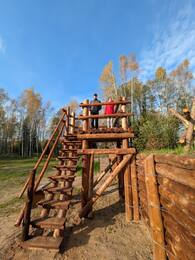
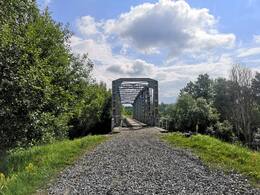
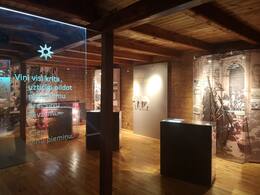

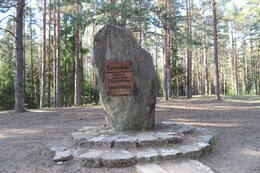
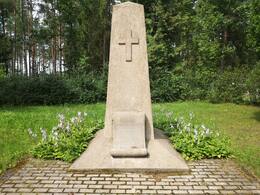
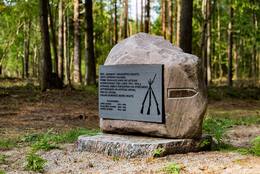
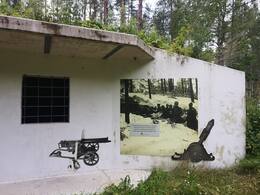
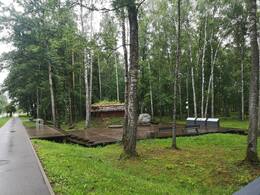
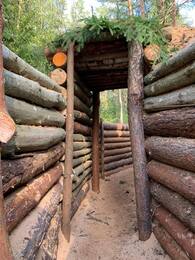

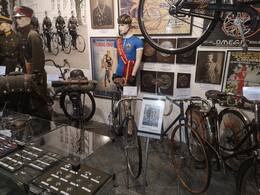
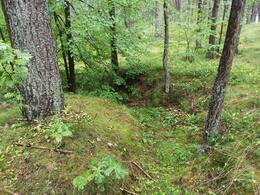
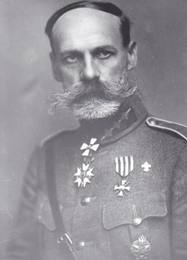
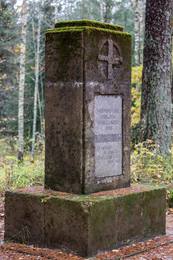
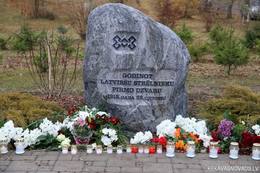
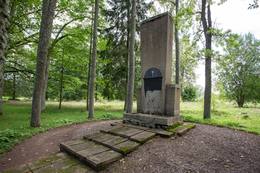

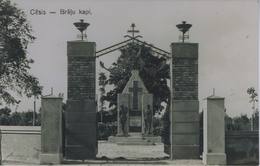
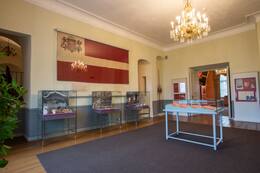

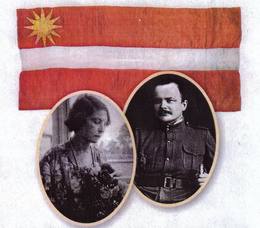
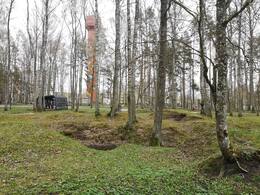
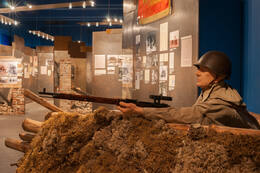
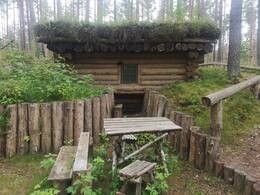
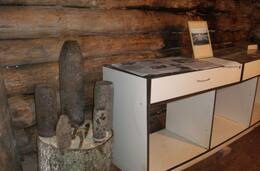
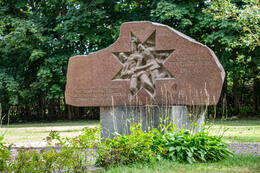


Please make corrections to the list of fallen Latvian archers. My grandmother's brother Indriķis Kadiķis, Jēkab's son, died on January 16, 1917, was born in Snæpel